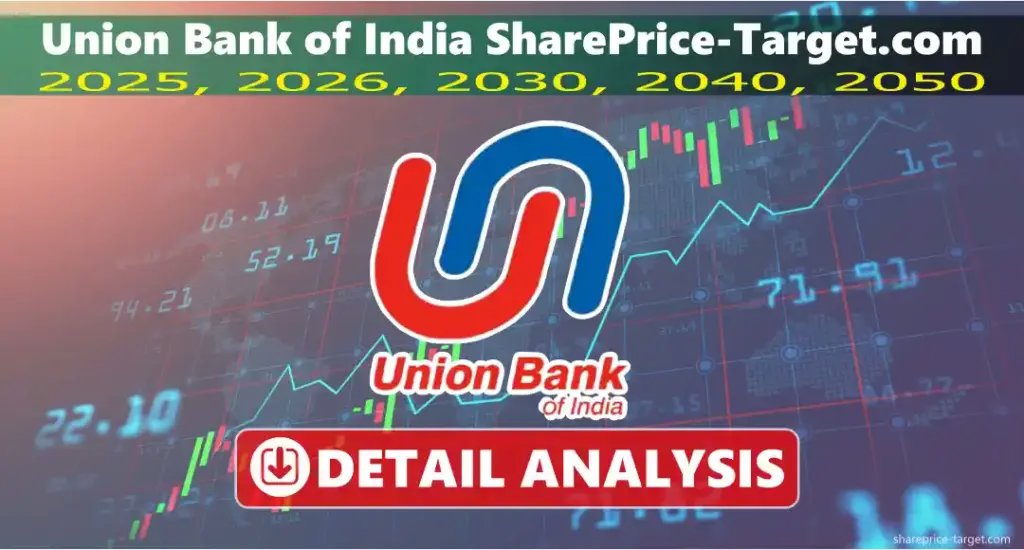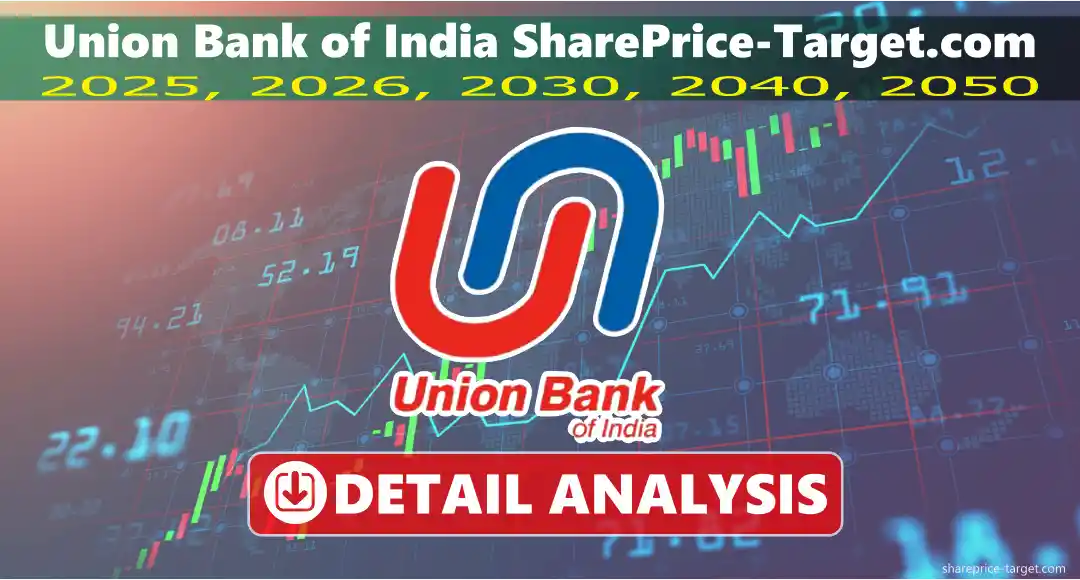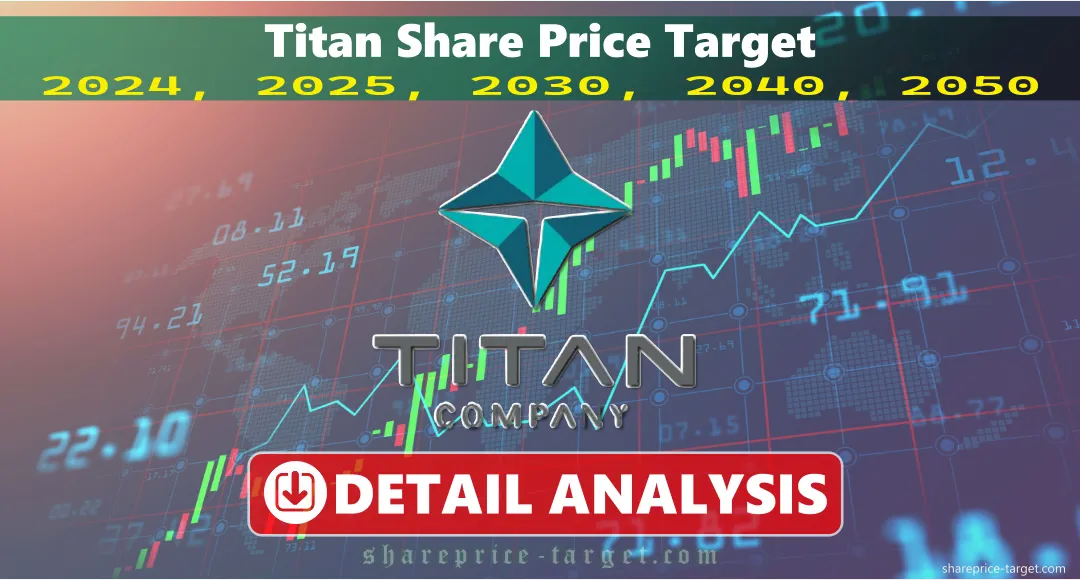Union Bank of India Share Price Target 2025, 2026, 2030, 2040, 2050
Union Bank of India is a large bank owned by the government. It helps people and businesses with banking services like savings accounts, loans, credit cards, and investments. The bank has many branches and ATMs all over India and also works in other countries like the UAE, Australia, and the UK. It expands by joining with other banks. It is also good at digital banking, offering simple online services and modern banking tools.
- 1 What is Union Bank of India Ltd NSE: UNIONBANK?
- 2 Union Bank of India Share Price Target
- 3 Union Bank of India Share Price Target 2025
- 4 Union Bank of India Share Price Target 2026
- 5 Share Price Target 2027
- 6 Share Price Target 2028
- 7 Share Price Target 2029
- 8 Union Bank of India share price Target 2030
- 9 Share Price Target 2040
- 10 Share Price Target 2050
- 11 Should I buy Union Bank of India stock?
- 12 Union Bank of India earnings results
- 13 Is Union Bank of India stock good to buy? (bull case & bear case)
- 14 Conclusion
- 15 FAQs
What is Union Bank of India Ltd NSE: UNIONBANK?
Union Bank of India was established in 1919 and is situated in Mumbai. It is a government-owned bank that offers services such as savings accounts, loans, and online banking. After merging with Andhra Bank and Corporation Bank in 2020, it became one of the largest banks in India. It has branches and ATMs across India and also in countries like the U.S., U.K., and Dubai. It is listed on the Bombay Stock Exchange and the National Stock Exchange, and it focuses on making banking easier for people by using technology and offering services to more people.
It focuses on helping people, not just making money, and makes banking available to everyone. With support from the government, the bank offers services at low costs and gives loans to farmers, small businesses, and people in villages. It also supports the growth of the economy. This makes the bank an important part of India’s banking system, serving millions of people and helping the country progress. In 2025, its share price target would be ₹194, as per stock market analysts.
According to stock market analysts, its share price would be between ₹106 to ₹194 in 2025.
| Year | Minimum Price (Rs) | Maximum Price (Rs) |
| 2025 | 106 | 194 |
| Month | Minimum Price (Rs) | Maximum Price (Rs) |
| January | 100 | 126 |
| February | 106 | 121 |
| March | 107 | 128 |
| April | 112 | 132 |
| May | 114 | 147 |
| June | 138 | 158 |
| July | 128 | 155 |
| August | 124 | 138 |
| September | 118 | 148 |
| October | 106 | 156 |
| November | 117 | 178 |
| December | 120 | 194 |
In 2020, it joined with two other government banks, Andhra Bank and Corporation Bank. This made it stronger and able to serve more people. It could offer more services and reach more customers in cities, towns, and villages by combining the three banks. The merger created a bigger network of branches and ATMs, making banking easier for individuals, small businesses, and big companies. It also helped UBI compete better with private banks. In 2026, its share price target would be ₹285, as per stock market analysts.
Its share price would be between ₹190 to ₹285 in 2026, as per stock market analysts.
| Year | Minimum Price (Rs) | Maximum Price (Rs) |
| 2026 | 190 | 285 |
| Month | Minimum Price (Rs) | Maximum Price (Rs) |
| January | 190 | 203 |
| February | 193 | 211 |
| March | 197 | 217 |
| April | 200 | 225 |
| May | 209 | 237 |
| June | 211 | 248 |
| July | 217 | 253 |
| August | 224 | 259 |
| September | 230 | 263 |
| October | 238 | 266 |
| November | 245 | 278 |
| December | 255 | 285 |
The bank has many branches and ATMs all over the country, serving millions of people in both cities and villages. This wide network makes sure everyone can use banking services, from simple savings accounts to special loans. It has also focused on digital banking, so customers can use online and mobile services to manage their money easily. This makes banking faster and more convenient for everyone. In 2027, its share price target would be ₹384, as per stock market analysts.
According to stock market analysts, its share price would be between ₹281 to ₹384 in 2027.
| Year | Minimum Price (Rs) | Maximum Price (Rs) |
| 2027 | 281 | 384 |
The bank offers many services for different customers. For individuals, it provides savings and current accounts, fixed deposits, personal and home loans, credit cards, and other financial products. For businesses, it offers loans, trade services, and other financial help. The bank also supports farmers and agribusinesses it gives loans and financial suggestions. Also, it provides investment options like mutual funds and insurance, helping customers save money and plan for the future. In 2028, its share price target would be ₹491, as per stock market analysts.
Its share price would be between ₹378 to ₹491 in 2028, as per stock market analysts.
| Year | Minimum Price (Rs) | Maximum Price (Rs) |
| 2028 | 378 | 491 |
It has improved its digital banking to make it safe and easy for customers. People can use internet banking and mobile banking. The mobile app allows checking balances, transferring money, paying bills, and more, with strong security to keep accounts safe. It makes banking simple, especially for people who prefer using phones or computers by offering these digital services. In 2029, its share price target would be ₹592, as per stock market analysts.
According to stock market analysts, its share price would be between ₹485 to ₹592 in 2029.
| Year | Minimum Price (Rs) | Maximum Price (Rs) |
| 2029 | 485 | 592 |
The bank also has branches in countries like the United States, the United Kingdom, Dubai, and Hong Kong. These branches serve Indian citizens living abroad, businesses involved in international trade, and help with foreign money transfers. Being present in major global cities allows UBI to support Indian businesses abroad and provide services to Indians living outside India. In 2030, its share price target would be ₹704, as per stock market analysts.
Its share price would be between ₹586 to ₹704 in 2030, as per stock market analysts.
| Year | Minimum Price (Rs) | Maximum Price (Rs) |
| 2030 | 586 | 704 |
| Month | Minimum Price (Rs) | Maximum Price (Rs) |
| January | 586 | 600 |
| February | 590 | 612 |
| March | 593 | 619 |
| April | 597 | 628 |
| May | 600 | 635 |
| June | 607 | 642 |
| July | 611 | 657 |
| August | 625 | 668 |
| September | 635 | 677 |
| October | 642 | 680 |
| November | 658 | 689 |
| December | 667 | 704 |
It is a government-owned bank, so it follows rules and policies set by the government and the Reserve Bank of India (RBI). These rules cover things like keeping enough cash, managing capital, handling bad loans, and other banking standards. The government also guides the bank to focus on important areas, like providing banking services to everyone, supporting farmers, helping small businesses, and improving rural areas. In 2040, its share price target would be ₹1395, as per stock market analysts.
According to stock market analysts, its share price would be between ₹1260 to ₹1395 in 2040.
| Year | Minimum Price (Rs) | Maximum Price (Rs) |
| 2040 | 1260 | 1395 |
| Month | Minimum Price (Rs) | Maximum Price (Rs) |
| January | 1260 | 1288 |
| February | 1267 | 1297 |
| March | 1275 | 1308 |
| April | 1281 | 1315 |
| May | 1284 | 1327 |
| June | 1288 | 1338 |
| July | 1300 | 1347 |
| August | 1310 | 1358 |
| September | 1317 | 1367 |
| October | 1338 | 1372 |
| November | 1345 | 1380 |
| December | 1362 | 1395 |
It has many chances to grow, but also some challenges to face. The bank can grow by improving digital banking, giving more loans to people and small businesses, reaching more customers, working with fintech companies, cutting costs, completing the merger of other banks, and expanding overseas and into trade finance. It must deal with bad loans, improve risk management, protect customer data, follow rules, manage costs in rural branches, and compete with private banks and fintech companies. In 2050, its share price target would be ₹2350, as per stock market analysts.
Its share price would be between ₹2190 to ₹2350 in 2050, as per stock market analysts.
| Year | Minimum Price (Rs) | Maximum Price (Rs) |
| 2050 | 2190 | 2350 |
| Month | Minimum Price (Rs) | Maximum Price (Rs) |
| January | 2190 | 2235 |
| February | 2210 | 2247 |
| March | 2219 | 2259 |
| April | 2228 | 2274 |
| May | 2235 | 2289 |
| June | 2241 | 2300 |
| July | 2248 | 2310 |
| August | 2252 | 2319 |
| September | 2257 | 2325 |
| October | 2268 | 2337 |
| November | 2275 | 2345 |
| December | 2290 | 2350 |
Should I buy Union Bank of India stock?
| Year | Minimum Price (Rs) | Maximum Price (Rs) |
| 2025 | 106 | 194 |
| 2026 | 190 | 285 |
| 2027 | 281 | 384 |
| 2028 | 378 | 491 |
| 2029 | 485 | 592 |
| 2030 | 586 | 704 |
| 2050 | 2190 | 2350 |
| 2050 | 2190 | 2350 |
It could be a good option for investment because the bank is earning good profits, analysts expect the price to go up, and it gives a fair dividend. The bank has many branches and good online banking services, which can help it grow more in the future. But, there are some risks, like loans that may not be repaid, rules from the government that affect the bank, and competition from private banks and fintech companies. Its stock may be suitable for people who want to invest in the Indian banking sector.
Union Bank of India earnings results
| Mar 2020 | Mar 2021 | Mar 2022 | Mar 2023 | Mar 2024 | Mar 2025 | TTM | |
| Revenue + | 37,479 | 69,311 | 68,230 | 81,163 | 100,376 | 108,417 | 109,365 |
| Interest | 25,837 | 44,112 | 40,178 | 48,033 | 63,364 | 70,733 | 71,960 |
| Expenses + | 21,166 | 36,270 | 32,264 | 36,155 | 32,422 | 34,738 | 35,299 |
| Financing Profit | -9,523 | -11,071 | -4,213 | -3,024 | 4,590 | 2,946 | 2,106 |
| Financing Margin % | -25% | -16% | -6% | -4% | 5% | 3% | 2% |
| Other Income + | 5,789 | 14,307 | 13,524 | 15,915 | 17,813 | 21,562 | 21,632 |
| Depreciation | 417 | 908 | 745 | 745 | 896 | 1,084 | 0 |
| Profit before tax | -4,151 | 2,327 | 8,566 | 12,147 | 21,507 | 23,424 | 23,738 |
| Tax % | -27% | -22% | 39% | 31% | 36% | 23% | |
| Net Profit + | -3,121 | 2,863 | 5,265 | 8,512 | 13,797 | 18,027 | 18,813 |
| EPS in Rs | -9.12 | 4.47 | 7.70 | 12.45 | 18.07 | 23.62 | 24.64 |
| Dividend Payout % | 0% | 0% | 25% | 24% | 20% | 20% |
Key Metrics
| TTM PE Ratio | PB Ratio | Dividend Yield | Sector PE | Sector PB | Sector Div Yld |
| 5.54 | 0.90 | 3.55% | 16.89 | 2.29 | 1.04% |
Peers & Comparison
| Stock | PE Ratio | PB Ratio | Dividend Yield |
| Union Bank of India Ltd | 5.67 | 0.90 | 3.55% |
| State Bank of India | 9.80 | 1.51 | 1.87% |
| Punjab National Bank | 6.67 | 0.92 | 2.70% |
| Bank of Baroda Ltd | 5.93 | 0.83 | 3.53% |
Is Union Bank of India stock good to buy? (bull case & bear case)

Bull Case:
- It has grown its earnings per share (EPS) by 42% every year over the past three years.
- The stock shows signs of an upward trend, staying above its 200-day moving average and showing positive momentum.
- The stock is priced lower than its actual value, at 0.90 times its book value.
- The stock gives a good dividend of 3.55%.
- The company has grown its profits by 50.7% per year over the last 5 years.
- The company has been giving 21.4% of its profits as dividends regularly.
- The company is using its working capital more efficiently, reducing the time from 224 days to 117 days.
Bear Case:
- The company has a low interest coverage ratio.
- The company has large contingent liabilities of ₹6,06,539 crore.
- Future earnings growth is expected to be only 0.8% per year, and revenue growth around 10.2% per year, which is lower than past growth.
- Indian banks, including UBI, may reduce dividend payouts due to lower profits, which could affect investors who rely on dividend income.
Conclusion
It is a government-owned bank that helps people, businesses, and farmers with savings accounts, loans, credit cards, and investments. It has many branches in India and other countries and uses digital banking to make services easy and fast. The bank has grown by merging with other banks, earns good profits, and gives decent dividends. It is an important bank serving millions of customers and helping the economy, but investors should think about both the advantages and risks before investing.








